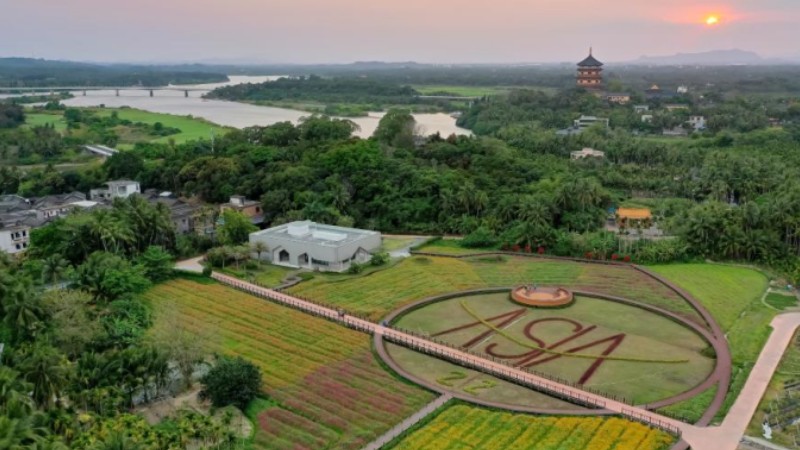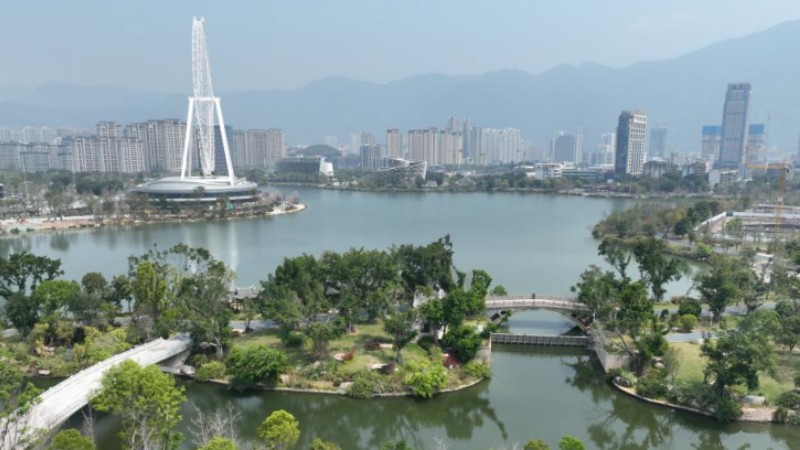Smart technologies empower China's protection of "mother rivers"
HEFEI, March 27 (Xinhua) -- Equipped with a remote-sensing satellite, radar, drones and cameras, an intelligent management platform conducts real-time monitoring of the Wuhu section of the Yangtze River.
"With the intelligent equipment and algorithms, the platform can analyze the conditions of passing vessels automatically and notify inspectors if there is illegal fishing, sand mining, or waste dumping," said Wei Bo, an official with the Wuhu municipal development and reform commission responsible for building this platform.
According to Wei, the intelligent platform was launched in January 2021 based on the data and technical support of multiple departments in Wuhu City, east China's Anhui Province, to jointly protect the Yangtze River in smarter and more efficient ways.
Along the Wuhu section of the Yangtze River, dozens of high-definition cameras were installed to monitor the river around the clock. Radar signals from seven radar stations are shared by the platform to identify and trace illegal vessels, while satellite imagery is used and compared each season to observe the possible destruction of wetlands.
"Thanks to these modern sci-tech methods, we have found more than 20 illegal sand mining vessels and cracked over 120 illegal fishing cases, deterring illegal acts on the Yangtze River and improving the ecological environment of the Yangtze," said Wei.
The Yellow River and the Yangtze River are the "mother rivers" of the Chinese nation. Amid joint efforts to protect "mother rivers," multiple sci-tech measures have played an important role.
In east China's Shandong Province, 2,627 video surveillance sites and 219 drones have been applied to monitor and patrol the Yellow River sections passing through this province.
"Through smart equipment, we adopt an integrated patrol method to monitor floods and illegal acts on the Yellow River, which can greatly increase patrol efficiency and reduce related risks in the event of extreme weather," said Li Mindong, an official with the Shandong Yellow River information center.
Besides intelligent patrol, as more and more ships are encouraged to use onshore power sources to protect the ecosystem of the mother rivers, the construction and application of smart onshore power options have also speeded up at ports along the rivers.
At a port in Tongling City of Anhui, shipowners are scanning QR codes on onshore power piles with their smartphones to supply power to their ships directly, instead of relying on fuel-powered generators.
"On traditional onshore power piles, users need to record the power consumption and calculate the fees manually. Now, they can use and pay for electricity by scanning the codes on smart piles, which is very convenient. The total power consumption of vessels is also available in our system," said Li Gen from State Grid Tongling electric power company.
Currently, 23 ports in Tongling City have been equipped with onshore power facilities. In 2022, the onshore power consumption of Tongling's ports reached 769,000 kWh, a year-on-year increase of 33 percent, which is equivalent to a reduction of about 192 tonnes of fuel consumption and 49.9 tonnes of carbon dioxide emissions.
According to the administration of navigational affairs on the Yangtze River under the Ministry of Transport, over 780,000 transportation ships from the 11 provincial-level regions along the Yangtze River Economic Belt used onshore power totaling more than 74.9 million kWh in 2022, with both the number of vessels and the onshore power usage reaching a record high.
Photos
Related Stories
- China's top political advisor urges improved oversight for Yangtze River protection
- Strenuous efforts ensure better protection of "mother river"
- Rare fish released into Yangtze River in east China
- Yangtze River fishing ban sees positive progress: ministry
- Fisherman embraces new life ashore after Yangtze fishing ban
Copyright © 2023 People's Daily Online. All Rights Reserved.









